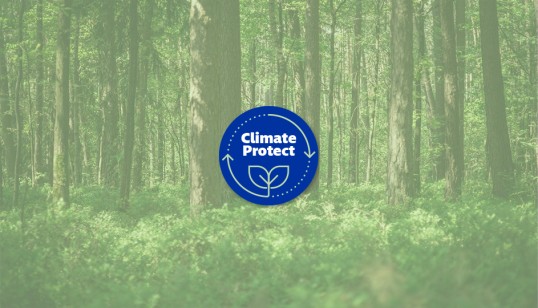GLS for the Environment
Measures to reduce the impact of GLS Italy
GLS Italy has actively researched and implemented solutions to reduce its environmental impact.
This commitment is shared with its local transport partners.
[1] This means vehicles that, when running, use electricity or fuels that create lower emissions than diesel or gasoline fuel (e.g. natural gas such as LPG, CNG, LNG; HVO, biogas).
[2] BREEAM is a sustainability assessment system developed bytheBuilding ResearchEstablishment (BRE) in the United Kingdom in 1990. It is designed to assess the environmental performance of buildings, infrastructures, and master planning projects on a wide range of criteria. These criteria encompass ten categories including energy, water, waste, pollution, transport, materials, health and well-being, management, land use and ecology, and innovation. The system measures a building's environmental impact by assessing its performance in these categories, which are weighted according to their environmental significance. To achieve certification, a building must meet certain standards and earn a sufficient score across all relevant categories. BREEAM aims to promote buildings that are environmentally, socially, and economically sustainable, enhancing the well-being of the people who live and work in them while minimizing their environmental impact. BREEAM certification process encourages developers, designers, and building owners to consider sustainability from the earliest stages of the design process, leading to the construction and operation of buildings that contribute positively to their environment.
Questions and Answers
What is GLS Italy’s approach to reduce CO2 emissions?
As road transport services are our core business, reducing carbon emissions from transport must be at the heart of our efforts. As part of our environmental strategy, we are focusing on converting to electric and low-emission modes of transport, such as electric vans, cargo bikes or the use of biofuels and biogas.
Among other measures we are gradually adopting, we are supporting the transformation of our fleet by investing in infrastructure upgrades at our sites. This includes installing electric vehicle charging stations, upgrading the electricity supply and implementing load balancing systems and electricity meters.
In addition to these infrastructure interventions, other measures we are adopting include, but are not limited to: offering incentives to subcontractors who make deliveries with electric vehicles (e.g. electric charging at GLS sites at more competitive prices than publicly available rates) or including provisions in contracts with transport partners aimed at converting internal combustion vans to electric or low-emission vehicles1.
In addition, we are working on the reduction of CO₂ emissions stemming from our sites and hubs through the increased use of renewable electricity certified by Guarantees of Origin as obtained from renewable sources and the installation of photovoltaic systems.
We take a holistic approach to addressing these challenges and seek solutions both within our company and together with our business partners.
As part of the GLS Group's environmental strategy, GLS Italy is committed to contributing to the following Group ambitions2:
By 2030
- Convert 100% of the company car fleet to electric
- Increase the share of electric and low-emission vehicles in the transport fleet to 50%
- Consume electricity from 100% renewable sources
By 2035
- 100% of new transport vehicles will be electric or low-emission1
[1] This means vehicles that, when running, use electricity or fuels that create lower emissions than diesel or gasoline fuel (e.g. natural gas such as LPG, CNG, LNG; HVO, biogas).
[2] The Group's ambitions are monitored at the consolidated Group level and do not represent the individual ambitions of subsidiaries, such as GLS Italy. These companies may perform above or below the Group's ambitions, while the Group as a whole remains compliant with the overall consolidated ambition of the Group.
Has GLS Italy set emission reduction targets based on scientific data?
To ensure that our efforts remain aligned with the latest scientific knowledge on climate change, General Logistics Systems B.V. (GLS B.V.)3 has set science-based targets in line with the Science Based Targets initiative (SBTi Services Limited, London)4, which were officially approved by the SBTi on 4 December 2024. GLS Italy is a subsidiary of GLS B.V. and is included in GLS B.V.'s SBTi commitment5.
GLS B.V. has set itself the ambition of reducing the GLS Group's total absolute greenhouse gas emissions by 90% by 2045, using 2021 as the reference year. In addition, GLS B.V. is committed to achieving the following short-term targets at Group level:
- 42% reduction in the GLS Group's total Scope 1 and 2 emissions by 2030
- 36.9% reduction in total Scope 3 CO2e emissions per tonne-km of light commercial vehicles by 2030
- 31.7% reduction in total Scope 3 CO2e emissions per tonne-km of heavy goods vehicles by 2030
[3] The GLS Group comprises all subsidiaries of GLS B.V. operating under the GLS brand.
[4] The
Science Based Targets initiative (SBTi Services Limited, London) is a partnership of
CDP , the
UN Global Compact , the World Resources Institute (WRI) and the
World Wide Fund for Nature (WWF). It promotes best practices in setting science-based emission reduction targets and provides independent assessment and validation of targets.
[5] Group SBTs are monitored at the consolidated Group level and do not represent individual targets for subsidiaries, such as GLS Italy. These companies may perform above or below the Group targets, while the Group as a whole remains compliant with the overall consolidated Group SBTs.
What specific measures is GLS Italy implementing to reduce CO2 emissions?
We provide adequate financial resources and specific expertise to implement measures aimed at continuously reducing carbon emissions. This includes both emissions from our transport activities and indirect sources such as electricity or heat purchased for our buildings. GLS Italy has an Environmental Manager and a dedicated Environmental Team to ensure the implementation of CO₂ emissions monitoring and reduction measures in Italy.
Our main measures are:
- Increasing the use of electric and low-emission vehicles in collaboration with our transport partners. We cooperate with vehicle and infrastructure manufacturers, as well as energy suppliers, to promote innovation in the field of transport and charging.
- Replacing all GLS company cars with electric vehicles by 2030.
- Continuously optimising the efficiency of the transport network using digital technologies in order to reduce distances travelled and CO₂ emissions. This also includes the implementation of parcel lockers, parcel shops and other out-of-home delivery options.
- Increase the use of electricity from renewable sources by installing solar panels on our buildings where possible and purchasing energy certified through Guarantees of Origin as obtained from renewable sources.
- Develop and continuously improve our environmental management system (ISO 14001).
- Progressively reduce resource consumption at our sites. In addition to monitoring energy consumption, we also record water and waste consumption annually to identify areas for improvement. Within our environmental management system (ISO 14001), we set local targets for monitoring and continuously reducing consumption.
- Ensure that employees and transport partners are aware of our environmental responsibilities.
- Monitor and verify our environmental and energy performance, using the information to continuously improve our efforts.
[6] This refers to vehicles that, when running, use electricity or fuels that generate lower emissions than diesel or petrol (e.g. natural gas such as LPG, CNG, LNG; HVO, biogas).
[7] Delivery solutions that take place outside of the recipient’s home, such as parcel lockers, parcel shops and other alternative delivery locations. This method aims to reduce the need for multiple delivery attempts and offers greater flexibility to recipients.
Does GLS Italy have an environmental management system?
- electricity consumption,
- water usage and
- waste production in our operational activities.
This is part of our environmental management system, which is certified annually in accordance with ISO 14001.



